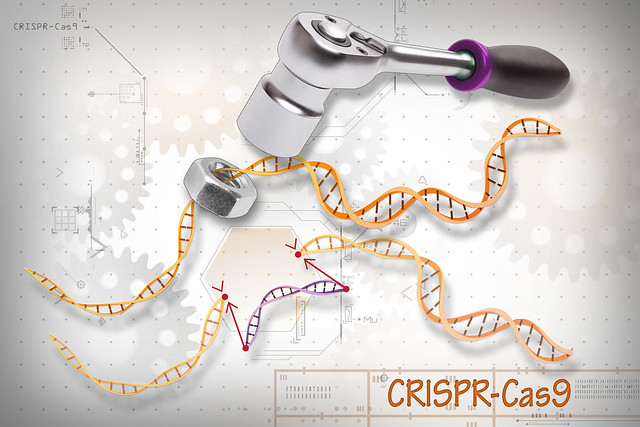
In the first large-scale analysis of cancer gene fusions, researchers at the Wellcome Sanger Institute, EMBL-EBI, Open Targets, GSK and their collaborators have used CRISPR to uncover critical drivers of cancer cell growth. One of the fusions they found appears to be a novel drug target for multiple cancers, including those of the brain and ovaries. These results were published in the May 16 issue of Nature Communications.
Gene fusions, which are caused by the abnormal joining of two different genes, can play an important role in the development of cancer. So much so, some are currently used as diagnostic tools to predict how particular cancer patients will respond to certain drugs. For example, the gene fusion BCR-ABL is a diagnostic marker and drug target for chronic myeloid leukemia patients who can be treated with Imatinib (Gleevec).
But not all gene fusions are drivers of cancer development. Gabriele Picco, Ph.D., co-first author of the paper and a scientist at Wellcome Sanger Institute, said: “The majority of gene fusions are not essential for the survival of cancer cells. As genome sequencing patients’ tumors becomes more common, those interpreting the data must be careful when considering whether a particular gene fusion is driving the cancer.”
Around 20,000 gene fusions have been identified so far but most of their roles in cancer remains poorly understood. Discriminating between fusions that are “cancer drivers” and those that are not was one of this study’s goals.
The researchers analyzed more than 8,000 gene fusions in over 1,000 human cancer cell lines, from 43 different cancer types, including pediatric cancers and cancers with unmet clinical need. They also tested the cell lines against more than 350 known anti-cancer drugs to see if any might be able to be repurposed to treat cancer patients with specific gene fusions. To screen the cell lines, the researchers used CRISPR.
They found that 90 per cent of gene fusions play no essential role in cancer development or growth. They also discovered a new fusion that is essential for the progression of multiple cancer types, including brain and ovarian cancers. Mathew Garnett, Ph.D., lead author from the Wellcome Sanger Institute and Open Targets, said: “We discovered a handful of gene fusions that are key for cancer survival. These genetic changes may present opportunities for treating patients with existing drugs, or could be the drug targets of the future. We discovered a new gene fusion, YAP1-MAML2, which offers a new drug target for several cancers, including ovarian cancer.”













